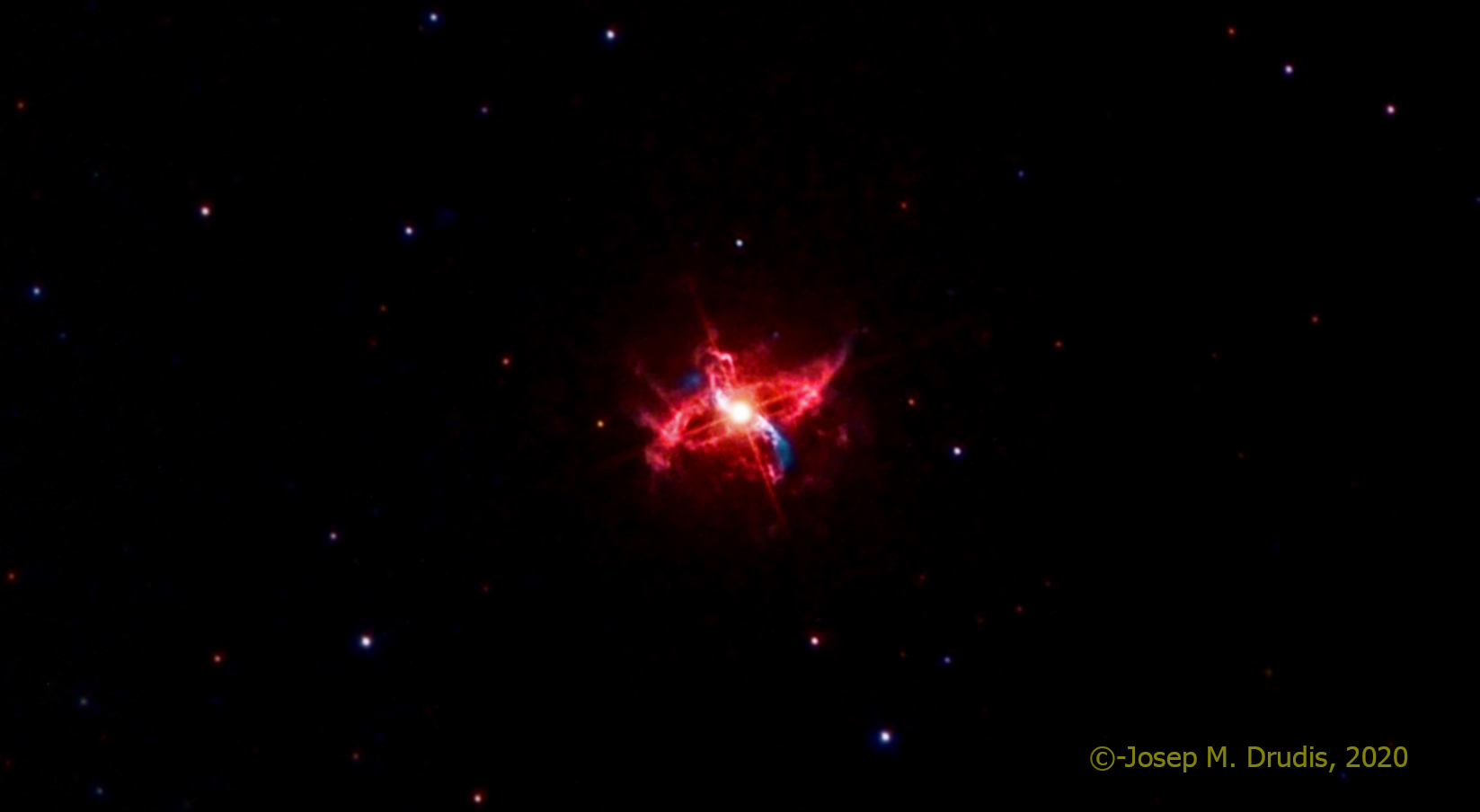Click on the image for a full resolution version
R Aquarii (R Aqr) is a double star. The primary, a Mira variable star, with a mass around 1 to 1.5 solar masses. The secondary is a white dwarf with a mass between 0.6 and 1.0 solar masses. The dynamics of this binary system is responsible for the formation of its external nebular structure, called Ced 211. The white dwarf pulls off mass from the primary Mira star and, when it collides the white dwarf surface, it is expelled back in a thermonuclear nova explosion. The resulting gas forms Ced 211. There seems to be an observation of this recurring nova. Korean astronomers recorded such a blast, believed to be R Aqr, in AD 1073.
This image has been taken with narrowband filters (Hydrogen alpha and OIII) and color mapped to natural color. The stars were captured with short exposure R, G and B frames.
Additional Information
Object
Name(s): R Aqr. Ced 211
Type: Binary Mira Variable star. Nova remnant.
RA: 23h 43m 48s
Dec: -15º 17’ 09”
Constellation: Aquarius
Size (arcmin): 2.5×1.7 arcmin
Magnitude: var. +6-11
Distance: 710 ly
Image
Date: 2019-05-22 to 2019-09-13
Location: iTelescope.net, SSO near Coonabarabran, NSW Australia
Size (arcmin): 16×9 arcmin
Telescope: 20” f/6.8 Reflector
Camera: SBIG STX16803 (4096x4096pix)
Guiding: Astrodon MonsterMOAG off-axis guider
Total exposure: 12 hours (Ha: 7.5 h; OIII: 3 h; RGB: 1.5 h)
Processing: CCDStack, Photoshop CC 2021
